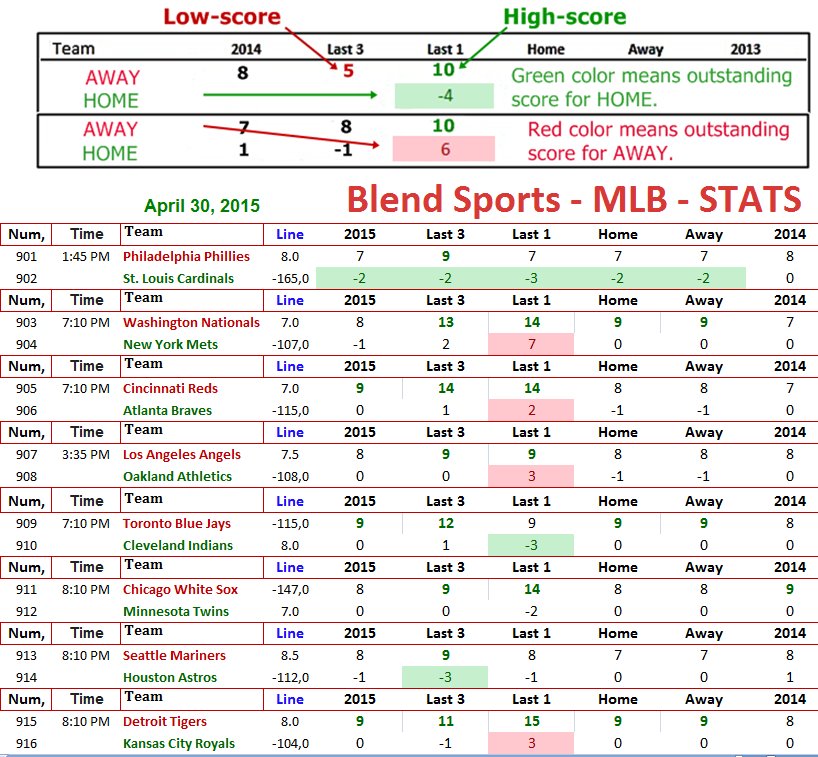Major League Baseball (MLB) stats are the lifeblood of the game, providing fans, analysts, and players with critical insights into performance and trends. These statistics not only tell the story of individual players but also reflect the broader dynamics of teams and matchups throughout the season. As the sport evolves, so does the complexity and depth of MLB stats, making them an essential part of understanding and appreciating America's pastime.
From batting averages and home runs to advanced metrics like WAR (Wins Above Replacement), MLB stats offer a treasure trove of information for anyone looking to deepen their knowledge of the game. These numbers are more than just figures; they encapsulate the hard work, dedication, and skill that athletes bring to the field every day. The significance of these stats extends beyond the diamond, influencing fantasy leagues, sports betting, and even Hall of Fame discussions.
As fans and analysts continue to embrace the role of data in sports, the importance of MLB stats will only grow. This article will delve into various aspects of MLB statistics, providing insights into their history, significance, and how they shape the game today. Whether you are a casual fan or a die-hard enthusiast, understanding MLB stats is key to fully appreciating the intricacies of baseball.
What Are the Most Common MLB Stats?
When discussing MLB stats, several key metrics come to mind that are crucial for evaluating player performance. Here are some of the most common stats:
- Batting Average (AVG) - A measure of a player's hitting ability, calculated by dividing the number of hits by the number of at-bats.
- Home Runs (HR) - The total number of times a player hits the ball out of the park.
- Runs Batted In (RBI) - The number of runs a player has driven in through their batting.
- Earned Run Average (ERA) - A statistic used to evaluate pitchers, representing the average number of earned runs they allow per nine innings.
- Wins Above Replacement (WAR) - A comprehensive statistic that measures a player's total contributions to their team in terms of wins.
How Do Advanced MLB Stats Change the Game?
In recent years, advanced statistics have changed the way teams evaluate talent and make decisions. Metrics like OPS (On-base Plus Slugging) and WHIP (Walks plus Hits per Inning Pitched) provide deeper insights than traditional stats. These advanced analytics help teams identify undervalued players and strategize better during games.
What Is the Significance of Sabermetrics in MLB Stats?
Sabermetrics refers to the empirical analysis of baseball through statistics. This approach has revolutionized how teams approach player evaluation and game strategy. By focusing on data-driven insights, teams can make more informed decisions, which can lead to increased success on the field.
How Do MLB Stats Impact Fantasy Baseball?
Fantasy baseball relies heavily on accurate and comprehensive MLB stats. Understanding player performance through these statistics can make the difference between winning and losing a fantasy league. Players who keep a close eye on stats are often better equipped to make savvy trades and lineup decisions.
Biography of a Legendary Player: Babe Ruth
Babe Ruth is often regarded as one of the greatest baseball players of all time. His unique blend of power hitting and charisma revolutionized the game and cemented his legacy in MLB history.
| Personal Details | Bio Data |
|---|---|
| Name | Babe Ruth |
| Date of Birth | February 6, 1895 |
| Place of Birth | Baltimore, Maryland, USA |
| Position | Outfielder / Pitcher |
| Teams | Boston Red Sox, New York Yankees, Boston Braves |
| Career Span | 1914 - 1935 |
| Notable Achievements | 7× World Series Champion, 12× All-Star, 2× MLB MVP |
What Are Babe Ruth's Key MLB Stats?
Babe Ruth's impact on the game is highlighted by his impressive statistics, which remain benchmarks in MLB history:
- Career Batting Average: .342
- Career Home Runs: 714
- Career Runs Batted In: 2,214
- Career On-base Percentage: .474
How Did Babe Ruth Change the Game with His Stats?
Babe Ruth's exceptional stats not only showcased his talent but also transformed the game’s approach to hitting. His ability to hit home runs popularized the long ball, leading teams to focus on power hitters, thus changing the landscape of baseball forever.
What Can We Learn from MLB Stats Today?
As the game continues to evolve, MLB stats will remain a crucial component of baseball. Understanding these statistics allows fans and analysts to appreciate the complexities of the game and recognize the talent and effort behind each player's performance. The ongoing development of new metrics will only deepen our understanding of MLB stats and their impact on the sport.




